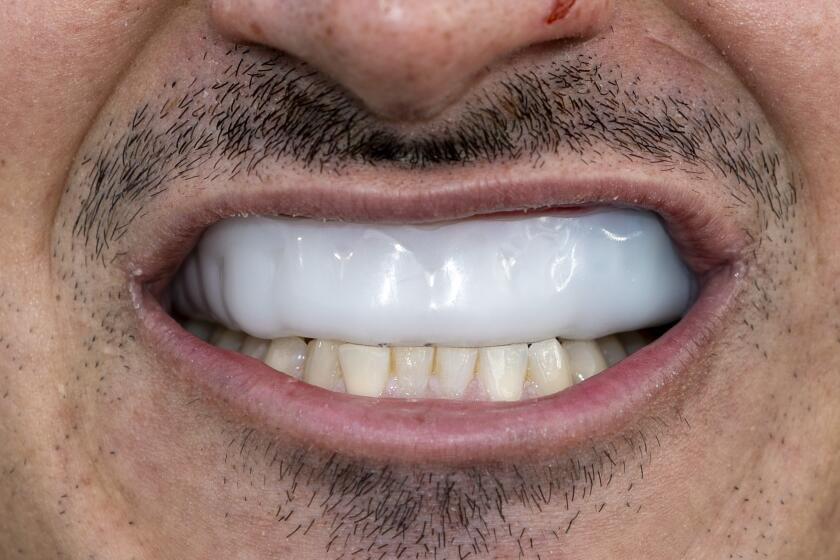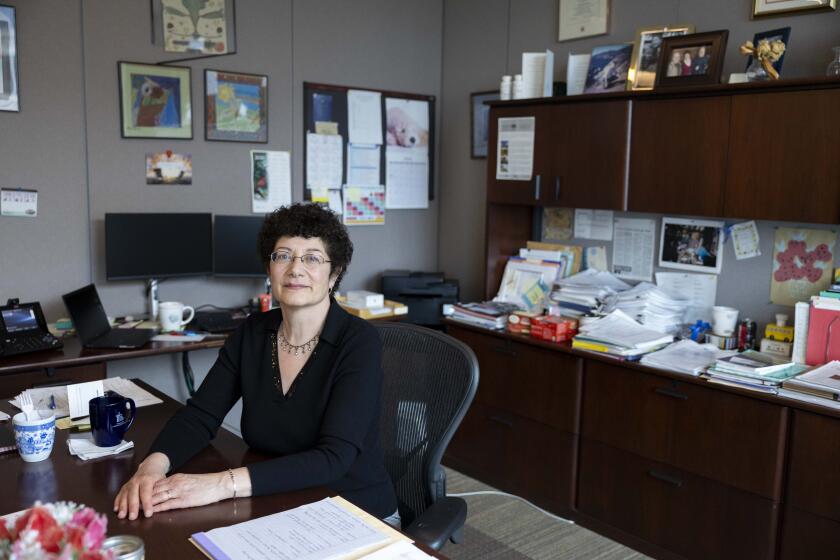COVID tests, elusive just months ago, are now plentiful

Supply rebounds as demand wanes after most recent virus surge; more offered by U.S. mail
Earlier this month, Juliana Park came upon what appeared like a mirage while shopping at a Target in San Jose. There, in the pharmacy department, around the corner from the allergy medicine, was an entire shelf of COVID-19 antigen home tests. Box after box of them, all for the taking.
“My jaw literally dropped under my mask,” said Park, 26, who works in communications for a Bay Area labor union. “I looked to my left, I looked to my right. Why aren’t people running to this corner?”
From the beginning, the pandemic has been characterized by a mismatch between supply and demand in crucial products — masks, toilet paper, semiconductors, cars, housing. So it has been with coronavirus tests.
Wasn’t it only two months ago that everyone was hunting Internet sites and going to every drugstore in a 30-mile radius in a futile search for a rapid test kit? During the Omicron surge, tests were so in demand they became one of the season’s top Christmas gifts. Amazon experienced shortages of the tests, and pharmacies had to set strict limits on how many you could buy.
For now, at least, at-home tests are abundant and everywhere.
This month, the Biden administration announced that Americans could order four more free tests per household through the U.S. Postal Service. This follows the test kits the government gave out in January under the same program, part of a plan to buy and distribute 1 billion tests.
There are at least nine different at-home rapid tests on the market in the United States. One manufacturer, Abbott Laboratories, produced 70 million BinaxNOW tests in the month of January alone, according to the company.

Free COVID-19 tests are readily available at public libraries, college bookstores, through local government agencies, private health insurance companies and in many workplaces. It’s a bounty of supply, imperfectly timed to appear when virus cases in the United States are on the decline, and mask and vaccine mandates are being reconsidered.
“It’s unfortunate that we didn’t have these tests earlier, before the Omicron wave, before the Delta wave and, frankly, before 2020,” said Dr. Michael Mina, 38, a pathologist and chief science officer at eMed, a digital health care company that links at-home testing to treatment for patients, including for COVID-19. “It feels ‘too little, too late.’ But it’s much better to have them available.”
Indeed, not only do many people have tests available, they have amassed stockpiles of them. Mary Robinette Kowal has 23 tests. That doesn’t count the four tests she just ordered through the government program.
Kowal, 53, a novelist who has written about spaceflight for The New York Times and lives in Hamilton County, Tenn., keeps the test kits in a kitchen drawer, close to the entry of her home. She and her husband live with her parents, who are in poor health; throughout the pandemic, she has asked houseguests to test when they come over.
“As case numbers fall, we do relax,” Kowal said. “On the other hand, the way you know the difference between a cold and COVID is testing.”
Park has eight boxes of tests, which she keeps in her pantry with her allergy medication and multivitamins. “Eight, objectively, is kind of a lot because these packs have two tests,” she said. “But I keep them in case someone else needs one. I feel comfortable right now at eight.”
Nicole Carr, a journalist for ProPublica who lives in the Atlanta metro area, also has eight tests, stored in her kitchen and bathroom, though she would prefer to always have 10, enough for her, her husband and their three children to test twice. Last week, Carr, 38, ordered more tests from the government, and also realized one of the boxes she had previously bought was about to expire.
Unlike hoarded rolls of toilet paper, it turns out coronavirus tests have a reasonably short shelf life. Some iHealth tests the government sent out in January have an expiration date of July. Though a test is not going to suddenly turn bad on the day of expiration, the chemical components degrade over time, experts said.
“What if you don’t use them? It was a good reminder to line the boxes up in order of expiration,” said Carr, who added that at-home testing has become “a natural part of planning for our family,” and one that she foresees will continue, at least through this year.
In fact, the overabundance of tests may come in handy, as cases are on the rise in parts of Europe and Asia, and as the highly contagious Omicron subvariant BA.2 now accounts for nearly a quarter of new cases in the United States.
Dr. Michael Misialek, associate chair of pathology at Newton-Wellesley Hospital in Newton, Mass., said there is nothing wrong with keeping a small stockpile. Indeed, he encouraged it.
“People should definitely not get worried that, ‘Oh, I have too many,’ ” Misialek, 53, said. “It’s not a one and done. The real accuracy is improved by doing another one a day or two later. Personally, I have 10 boxes at home.”
In the future, at-home rapid tests may well become part of the first-aid kit of the 21st century, a staple of the medicine cabinet along with Band-Aids and Advil, physicians said.
Park, whose eyes lit up when she was at Target, can well remember back eight weeks ago, when she didn’t have a single test at home, and couldn’t find one anywhere. She was still in scarcity mode, viewing the tests like a child would a bowl of lollipops.
“The first thought that ran across my head was, ‘How many can I buy? Is there a cap?’ ” she said.
A more generous spirit prevailed, however. “For me, it’s the take what I need mentality,” Park said. “I bought two.”
Kurutz writes for The New York Times, where this article originally appeared.
Get Essential San Diego, weekday mornings
Get top headlines from the Union-Tribune in your inbox weekday mornings, including top news, local, sports, business, entertainment and opinion.
You may occasionally receive promotional content from the San Diego Union-Tribune.





